Let me tell you, the world of software testing in 2025 is not what it used to be. I remember the days when “automation” meant wrangling with Selenium scripts, debugging cryptic errors at 2am, and hoping your test didn’t break because someone changed a button’s CSS class. Fast forward to today, and the landscape has shifted—big time. No code test automation tools are everywhere, and they’re not just for the engineers anymore. Business users, QA analysts, even product managers are jumping in, automating tests without writing a single line of code. It’s like we finally handed the car keys to the whole team, not just the folks who can drive stick.
Why the sudden surge? Well, for one, the pressure to release software faster (and with fewer bugs) is relentless. Plus, let’s be honest, there just aren’t enough automation engineers to go around. No code tools are making automation accessible, speeding up testing cycles, and saving companies a lot of money and headaches. In fact, , but only about 5% have managed to automate everything—most are still juggling a mix of manual and automated tests (). That gap is exactly why no code solutions are booming.
In this guide, I’ll walk you through what no code test automation really means, why it matters, how to pick the right tool, and—of course—my picks for the 15 best no code test automation tools in 2025. And while (my company) isn’t a test automation tool, it’s a great example of how no code automation is transforming business workflows beyond QA. So, buckle up—let’s get into it.
What Is No Code Test Automation? Why Is It Important?
No code test automation is exactly what it sounds like: tools that let you automate software testing without writing code. Instead of scripting in Java or Python, you use visual interfaces, drag-and-drop actions, or even plain English instructions to build and run tests. The complexity is handled behind the scenes, so you can focus on what you want to test—not how to code it.
Why does this matter? For starters, it opens up automation to a much broader audience. Business analysts, manual QA testers, product managers—anyone who understands the application can now contribute to automated testing. This is a huge shift from the old days, where only a handful of automation engineers could build and maintain tests. In fact, , so no code tools are bridging a massive skills gap.
It’s also a big deal for speed and quality. No code platforms can reduce test creation time by up to 90% and cut maintenance costs by 25–75% (). That means faster releases, fewer bugs, and happier customers.
Let’s clear up the terminology:
- No code: Absolutely no programming required. Everything is visual or in plain language.
- Low code: Mostly visual, but you can drop in code snippets for advanced scenarios.
- Traditional automation: Full-on scripting. Powerful, but requires programming skills and lots of maintenance.
No code test automation isn’t just about making life easier for QA—it’s about making quality everyone’s job.
How No Code Test Automation Tools Transform Business Workflows
No code test automation isn’t just a technical upgrade—it’s a business accelerator. Here’s how these tools are changing the game for teams:
1. Faster Testing Cycles
With no code tools, creating and updating tests is way quicker. . That means you can keep up with rapid development cycles, catch bugs early, and release more often.
2. Lower Costs
No code automation slashes the need for specialized automation engineers. Your existing QA team can handle more, and you spend less on hiring or outsourcing. Plus, .
3. Improved Collaboration
Tests are readable by everyone—no more “what does this script do?” confusion. Product managers, QA, and developers can all review and contribute, making quality a shared responsibility.
4. Broader Participation
Manual testers, business analysts, even operations folks can automate tests. This democratizes QA and helps cover more ground.
5. Concrete Use Cases
- Regression Testing: Automate repetitive checks after every release.
- Cross-Browser/Device Testing: Run the same tests across multiple environments.
- End-to-End Workflows: Test complex business processes that span web, mobile, and desktop.
- Frequent UI Changes: AI-powered tools adapt to changes without breaking.
ROI-Focused Benefits Table
| Team | Benefit | Example Impact |
|---|---|---|
| QA | Faster test creation, less maintenance | 90% faster test authoring, 75% less upkeep |
| Product | Shared test ownership, faster feedback | Release cycles cut from weeks to days |
| Operations | Broader test coverage, fewer production bugs | 7x ROI in large-scale automation projects |
How to Choose the Best No Code Test Automation Tool: Key Criteria
With so many options, picking the right tool can feel like speed dating for QA. Here’s my checklist for evaluating no code automation testing tools:
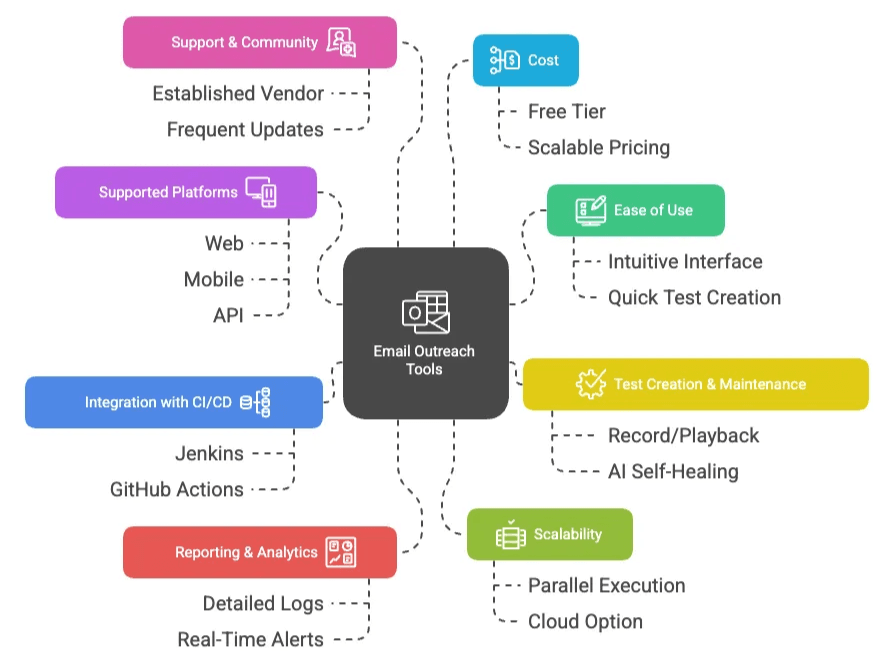
1. Ease of Use
Is the interface intuitive? Can a manual tester create a test in an hour or two? Look for drag-and-drop, record/playback, and clear documentation.
2. Supported Platforms
Does it cover everything you need—web, mobile, API, desktop? Make sure it supports your tech stack and target environments.
3. Test Creation & Maintenance
- Record/playback and easy editing
- Built-in keywords/actions
- Reusable components
- Conditional logic and loops
- AI self-healing for UI changes
- Data-driven testing
4. Integration with CI/CD
Does it play nice with Jenkins, GitHub Actions, Azure DevOps, etc.? Can you trigger tests from your pipeline and get results back automatically?
5. Reporting & Analytics
Look for detailed logs, screenshots, dashboards, and real-time alerts. Bonus points for actionable analytics and root cause hints.
6. Scalability
Can it handle thousands of tests? Does it support parallel execution? Is there a cloud option for scaling up quickly?
7. Support & Community
Is the vendor established? Is there a helpful community or responsive support team? Are updates frequent?
8. Cost
Is there a free tier? How does pricing scale (per user, per test, per device minute)? Watch for hidden costs.
Quick Checklist
| Criteria | Must-Have Features |
|---|---|
| Ease of Use | Visual editor, tutorials, fast onboarding |
| Supported Platforms | Web, mobile, API, desktop |
| Test Authoring | Record/playback, AI self-healing |
| CI/CD Integration | Plugins, APIs, reporting |
| Reporting | Dashboards, logs, screenshots |
| Scalability | Parallel runs, cloud/on-prem options |
| Support/Community | Docs, forums, vendor stability |
| Cost | Transparent pricing, free trial/tier |
Quick Comparison Table: 15 Best No Code Test Automation Tools in 2025
Here’s a side-by-side look at the top tools. (For more details, keep reading!)
| Tool | Supported Platforms | Key Features | Pros | Cons | Best For | Pricing |
|---|---|---|---|---|---|---|
| ACCELQ | Web, API, Mobile, Desktop | AI model-based, data-driven, cloud/on-prem | Robust logic, cross-platform, low maintenance | Enterprise pricing, learning curve | End-to-end enterprise testing | Paid, free trial |
| Katalon Studio | Web, Mobile, API, Desktop | Keyword-driven, dual mode, analytics | Versatile, free tier, active community | UI can be overwhelming, limited debugging | Mixed-skill teams, SMEs | Free & paid licenses |
| Mabl | Web, API, Mobile Web | AI recorder, auto-healing, CI/CD | Easy maintenance, DevOps-friendly | Low-code for advanced, cost for scale | Agile web QA in CI/CD | Subscription, free trial |
| Perfecto | Web, Mobile | Scriptless flowcharts, device cloud | Strong cross-browser/device, analytics | Limited logic, high cost | Enterprises needing device coverage | Enterprise, free trial |
| Tosca | Web, Mobile, API, SAP | Model-based, risk-based, integrations | High coverage, business process focus | Steep learning, expensive | Large orgs, SAP/ERP automation | Enterprise license |
| testRigor | Web, Mobile, API | Plain English, AI maintenance | Accessible, low upkeep | Platform lock-in, debugging AI | Manual QA teams, fast automation | Subscription, free POC |
| Tricentis Testim | Web, Mobile | AI recorder, smart locators, TestOps | Fast authoring, stable tests | Setup for CI, mobile evolving | Startups, SaaS, CI/CD | Contact vendor |
| Leapwork | Web, Desktop, SAP, API | Visual flowcharts, reusable blocks | Code-free, broad tech support | Setup complexity, high cost | Unified automation, enterprise | Enterprise license |
| Testsigma | Web, Mobile, API | Natural language, open-source, auto-heal | Cost-effective, unified, active community | Advanced features learning curve | Startups, open-source fans | Free & paid SaaS |
| TestGrid | Web, Mobile, API, OTT | AI auto-heal, device/network/load test | Unique breadth, CI integration | Coding for advanced, new platform | Media/IoT, device/network testing | Flexible, free trial |
| Kobiton | Mobile, Web on devices | Scriptless mobile, real device cloud | Mobile-centric, AI recorder | Limited web, complex logic needs code | Mobile QA, manual-to-auto transition | Cloud plans, free trial |
| TestComplete | Web, Mobile, Desktop | Keyword-driven, object recognition | Flexible, desktop support, large userbase | Aging UI, cost per seat | Desktop/web mix, experienced QA | Paid license, trial |
| Worksoft Certify | SAP, Oracle, Web, Desktop | Business process capture, analytics | Enterprise-grade, SAP/ERP focus | High cost, specialized | Large enterprises, SAP/ERP validation | Enterprise pricing |
| Rainforest QA | Web (cloud) | Plain English, visual, AI self-heal | Fully no-code, fast, minimal upkeep | UI focus, cloud-only, cost for scale | Startups, agile, on-demand QA | SaaS, free trial |
| Squish | Desktop, Web, Mobile | Record/playback, BDD, scripting | Versatile, cross-platform, strong support | Not fully no-code, high license cost | Embedded/cross-platform apps | Commercial, eval available |
The Top 15 No Code Test Automation Tools for 2025
I’ve spent a lot of time researching, demoing, and talking to teams about these tools. Here’s a quick tour of each—what makes them shine, where they fit, and what to watch out for.
ACCELQ
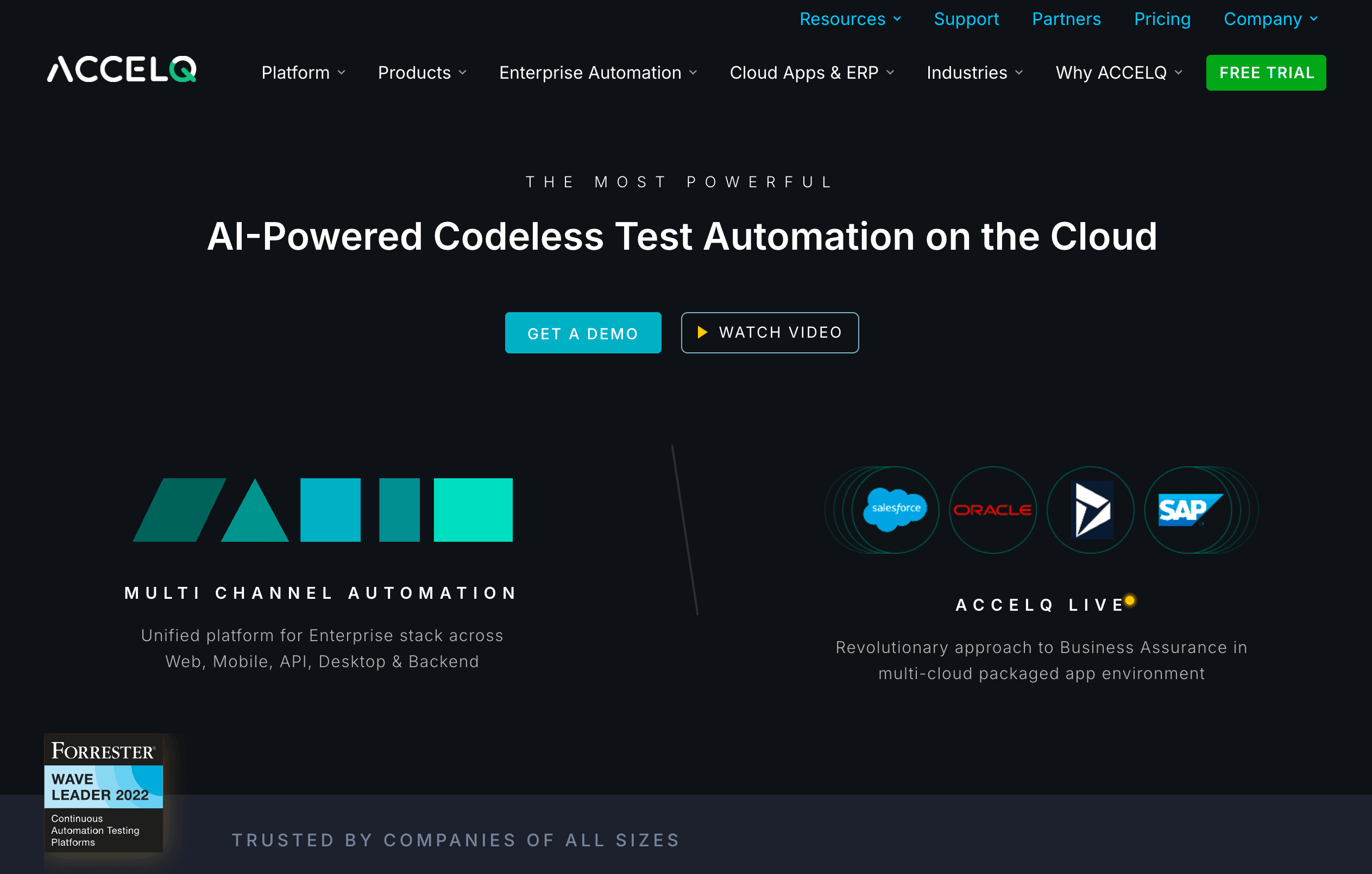
Overview: ACCELQ is a cloud-based, AI-powered platform that lets you automate web, API, mobile, and desktop apps—no code required. Its model-based approach means you define logical flows, and the system generates detailed steps. Think of it as automation that adapts as your app changes.
Key Features: AI-driven test generation, data-driven testing, smart element selectors, cloud/on-prem execution, deep integrations with CI/CD and ALM tools.
Pros: Handles complex, end-to-end scenarios without scripting; cross-platform; low maintenance thanks to AI self-healing.
Cons: Enterprise pricing, some learning curve, proprietary model means potential lock-in.
Best For: Agile teams and enterprises needing robust, scalable, cross-tech stack automation.
Katalon Studio
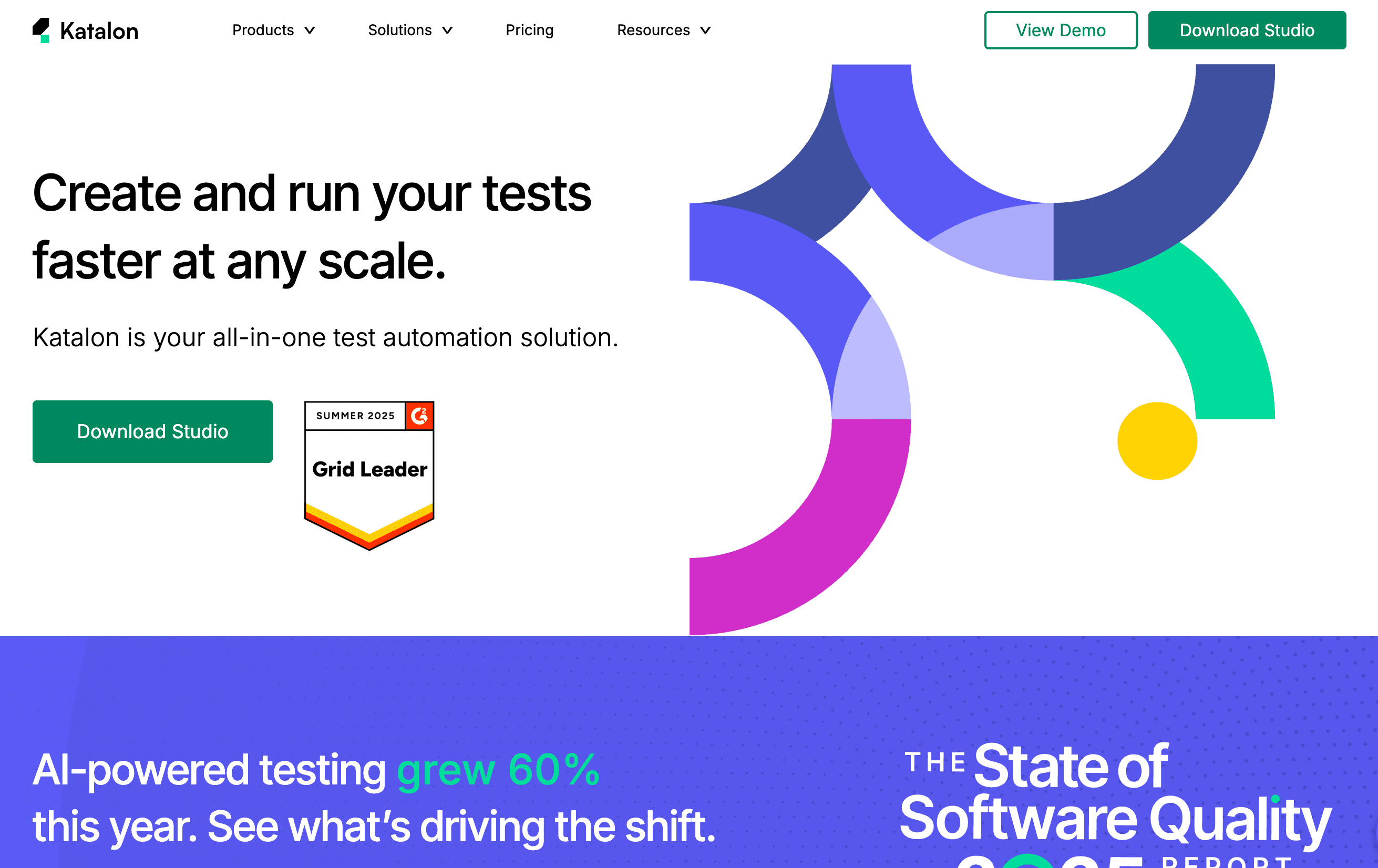
Overview: Katalon is an all-in-one solution that supports web, mobile, API, and desktop testing. It’s famous for its keyword-driven, scriptless interface, but you can also drop into code for advanced cases.
Key Features: Built-in keywords, record/playback, TestOps analytics, dual codeless/coded modes, CI integration.
Pros: Versatile, free community edition, active user base, supports both no code and low code.
Cons: UI can be overwhelming for beginners, advanced features require paid license, debugging could be better.
Best For: Teams wanting flexibility between no code and code, especially SMEs and mixed-skill groups.
Mabl
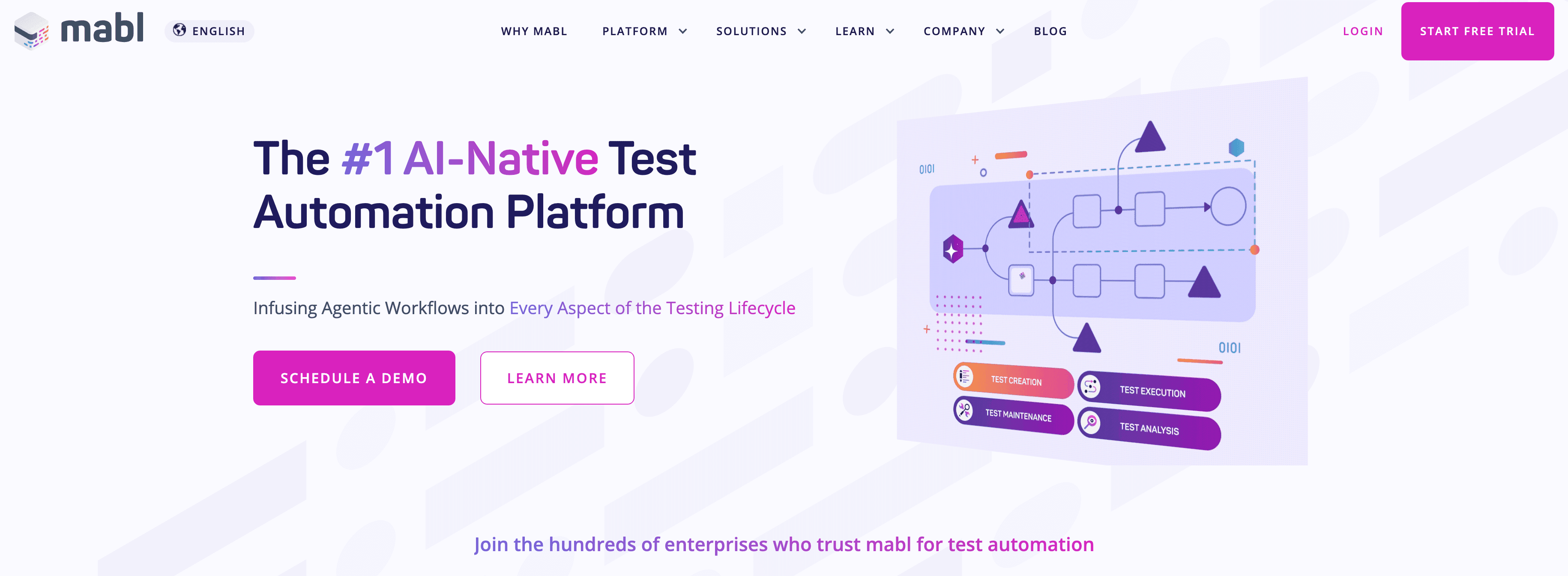
Overview: Mabl is a cloud-based, low-code tool that uses AI to create, maintain, and run web and API tests. It’s built for DevOps and continuous testing.
Key Features: Intelligent recorder, auto-healing, visual regression, API testing, CI/CD integration.
Pros: Fast maintenance, great for cloud pipelines, collaborative dashboard.
Cons: Low-code for advanced steps, higher cost at scale, limited native mobile support.
Best For: DevOps teams needing fast, smart web automation with minimal upkeep.
Perfecto
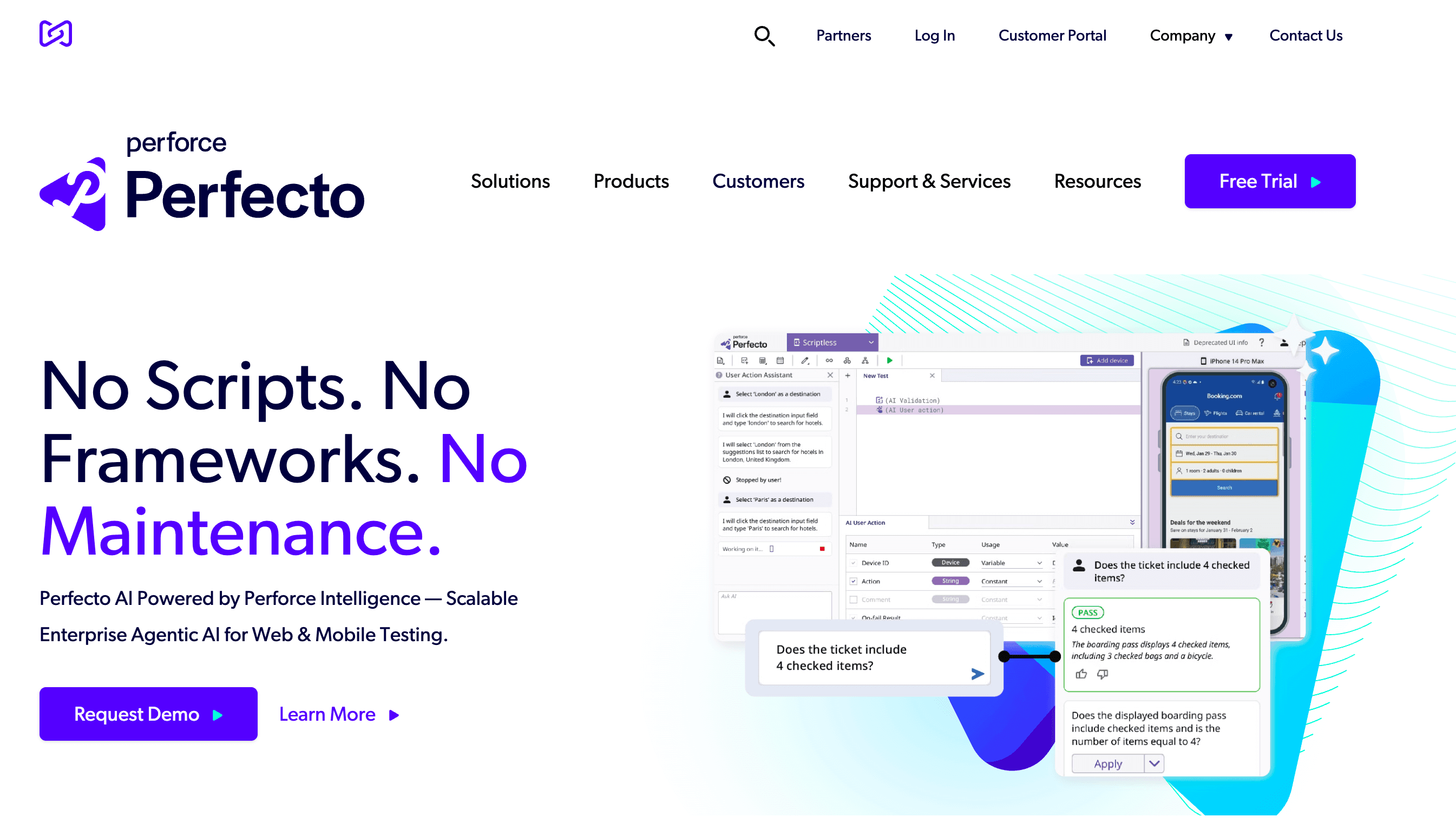
Overview: Perfecto is known for its enterprise-grade cloud device lab and scriptless test builder. It’s a go-to for teams needing cross-browser and mobile device coverage.
Key Features: Visual flowchart builder, real device cloud, rich reporting, parallel execution.
Pros: Excellent device/browser coverage, detailed analytics, strong for mobile/web.
Cons: High cost, limited flexibility for complex logic, some learning curve.
Best For: Enterprises needing wide device/browser coverage and robust infrastructure.
Tosca (Tricentis Tosca)
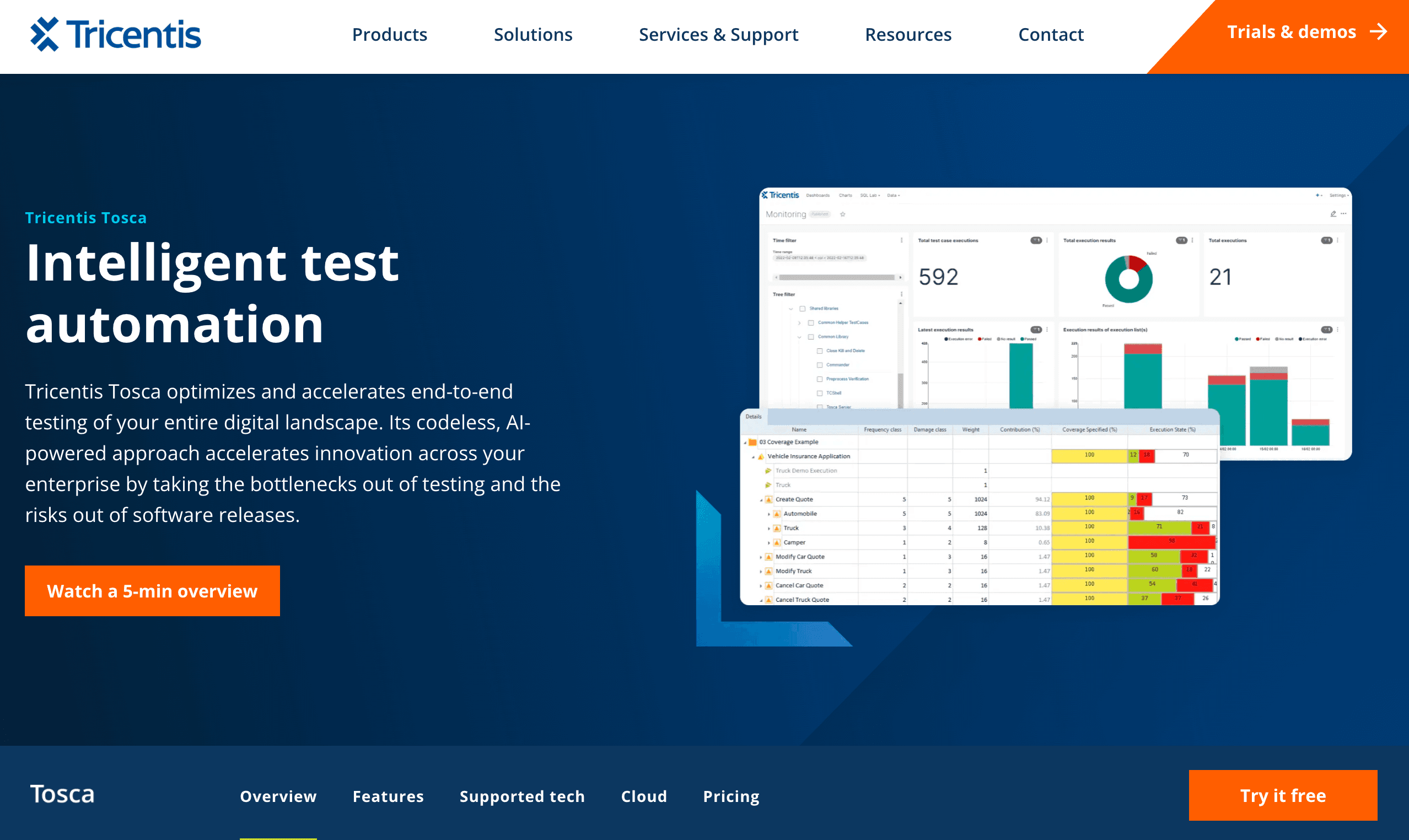
Overview: Tosca is a heavyweight in enterprise test automation, especially for SAP and packaged apps. Its model-based, risk-driven approach lets you automate business processes end-to-end.
Key Features: Model-based test design, risk-based optimization, business-readable scenarios, extensive integrations.
Pros: High automation coverage, supports legacy and modern apps, minimizes maintenance.
Cons: Steep learning curve, expensive, complex setup.
Best For: Large organizations automating business processes across multiple systems.
testRigor
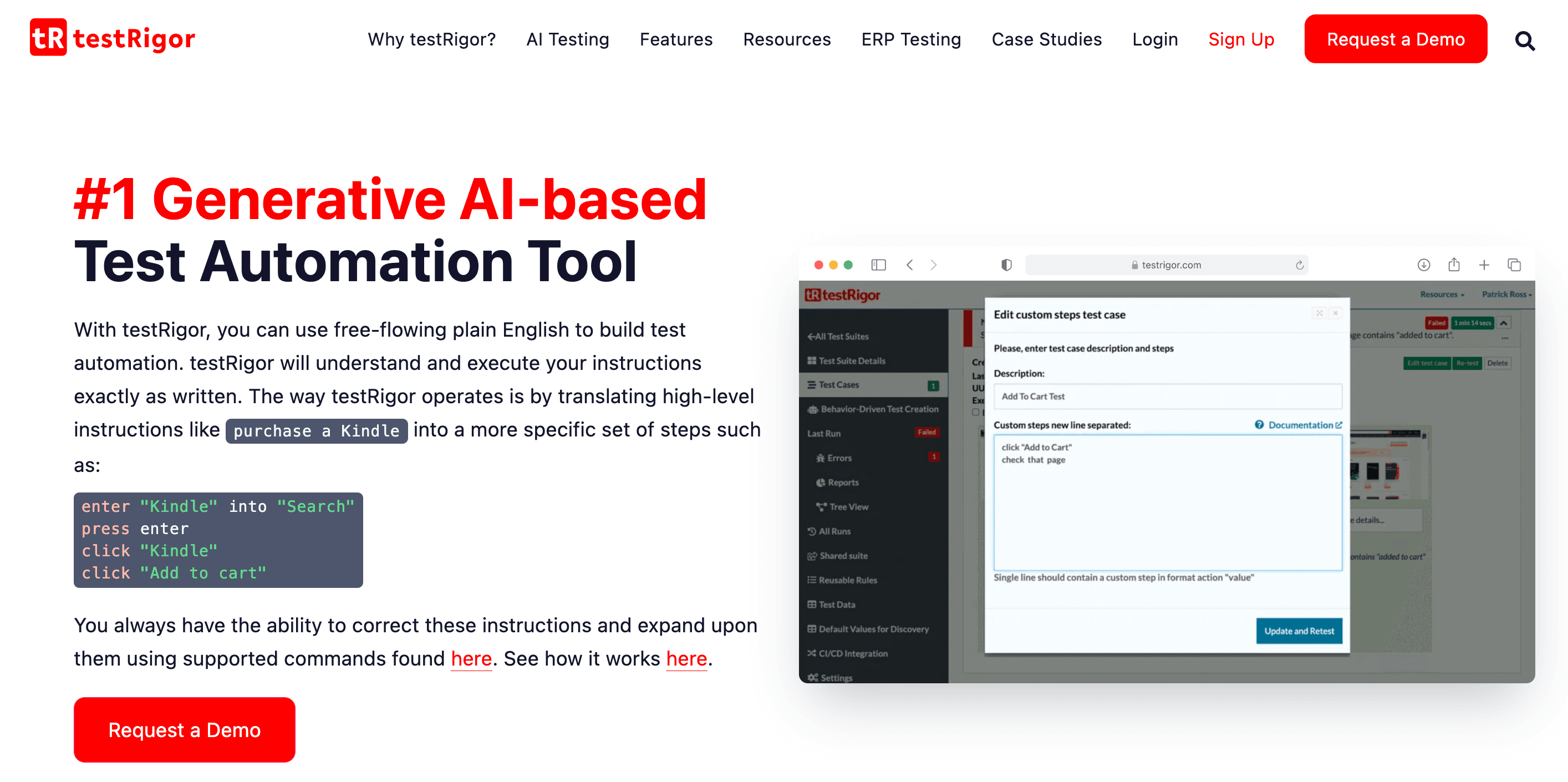
Overview: testRigor lets you write tests in plain English, which its AI interprets and executes. It’s designed to empower manual testers to automate without coding.
Key Features: Natural language test steps, AI element identification, auto-generated edge-case tests, low maintenance.
Pros: Extremely accessible, adapts to UI changes, great for non-coders.
Cons: Platform lock-in, debugging can be tricky, some advanced features still maturing.
Best For: Teams with lots of manual testers looking to automate quickly.
Tricentis Testim
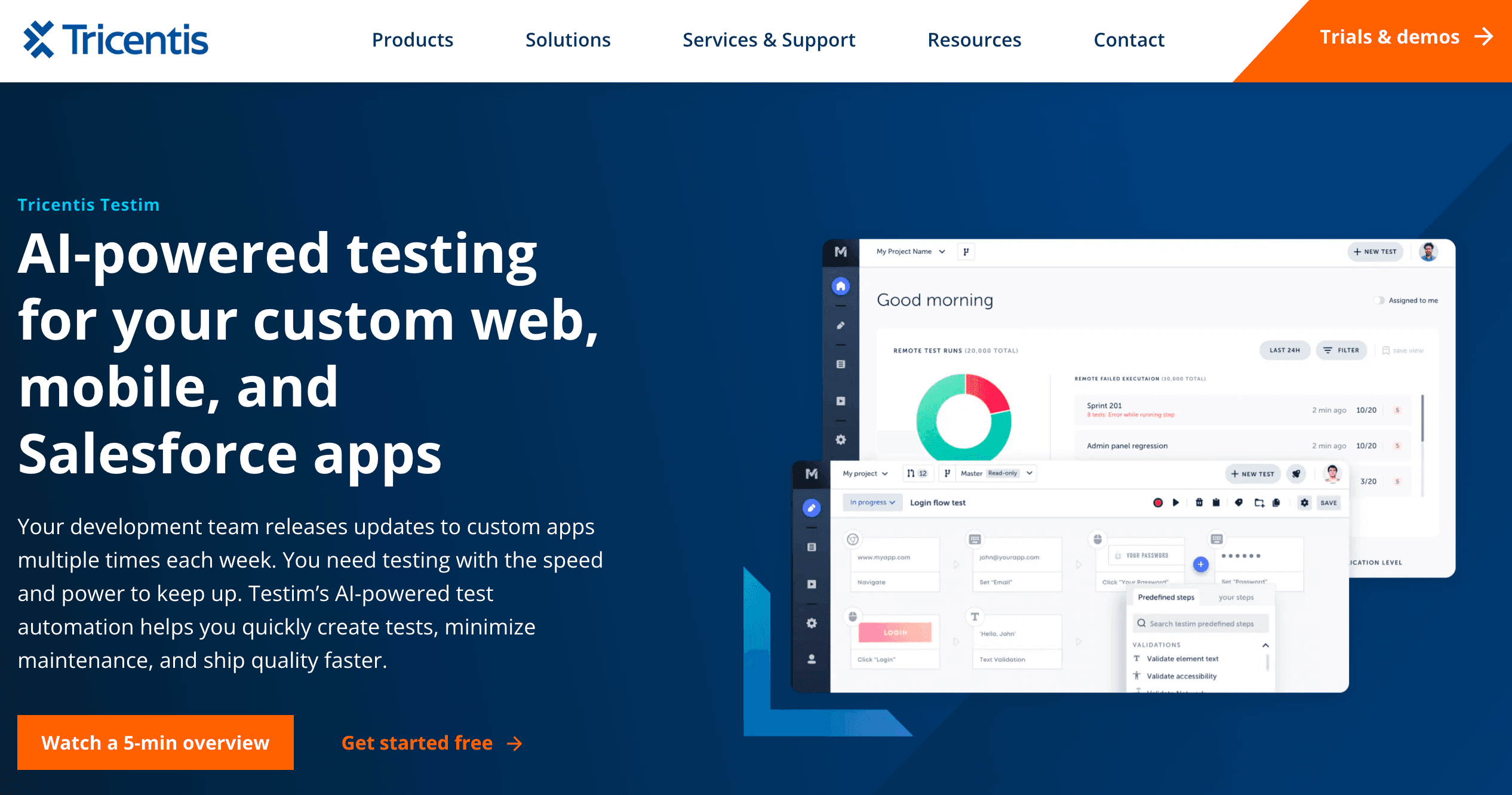
Overview: Testim (now part of Tricentis) is an AI-powered platform for fast, stable web and mobile test creation. Its smart locators and visual editor make authoring and maintenance a breeze.
Key Features: Smart recorder, AI-driven locators, visual editor, TestOps dashboard, parallel execution.
Pros: Rapid test authoring, stable tests, integrates with CI/CD.
Cons: Mobile support evolving, setup for complex pipelines, pricing may be steep.
Best For: Startups and SaaS teams in CI/CD environments.
Leapwork
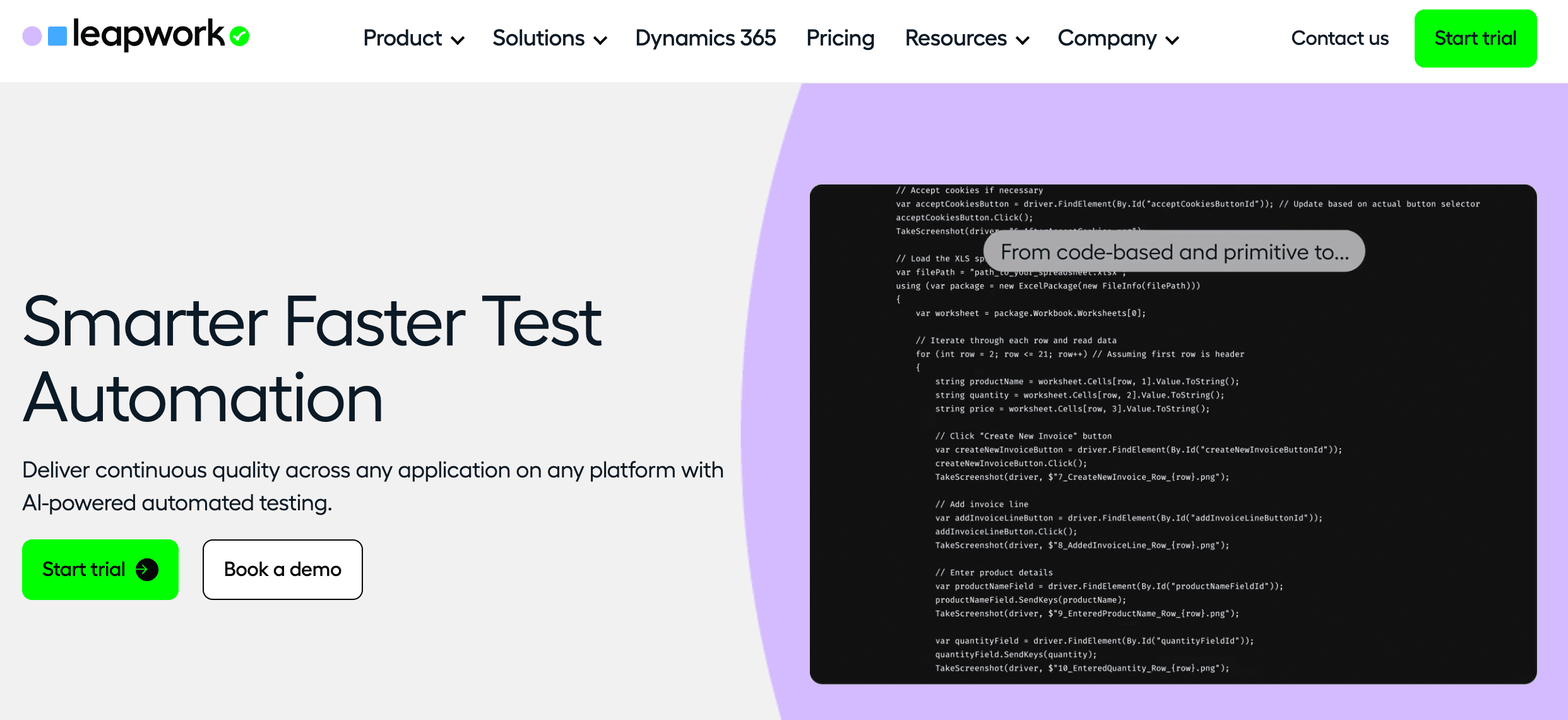
Overview: Leapwork is all about visual automation. You build flows by connecting blocks—no code, just logic. It supports web, desktop, SAP, and more.
Key Features: Drag-and-drop flowcharts, reusable blocks, video logs, broad tech stack support.
Pros: Truly code-free, reusable components, unifies testing and RPA.
Cons: Setup complexity, high cost, reporting could be more flexible.
Best For: Enterprises wanting unified automation across QA and business ops.
Testsigma
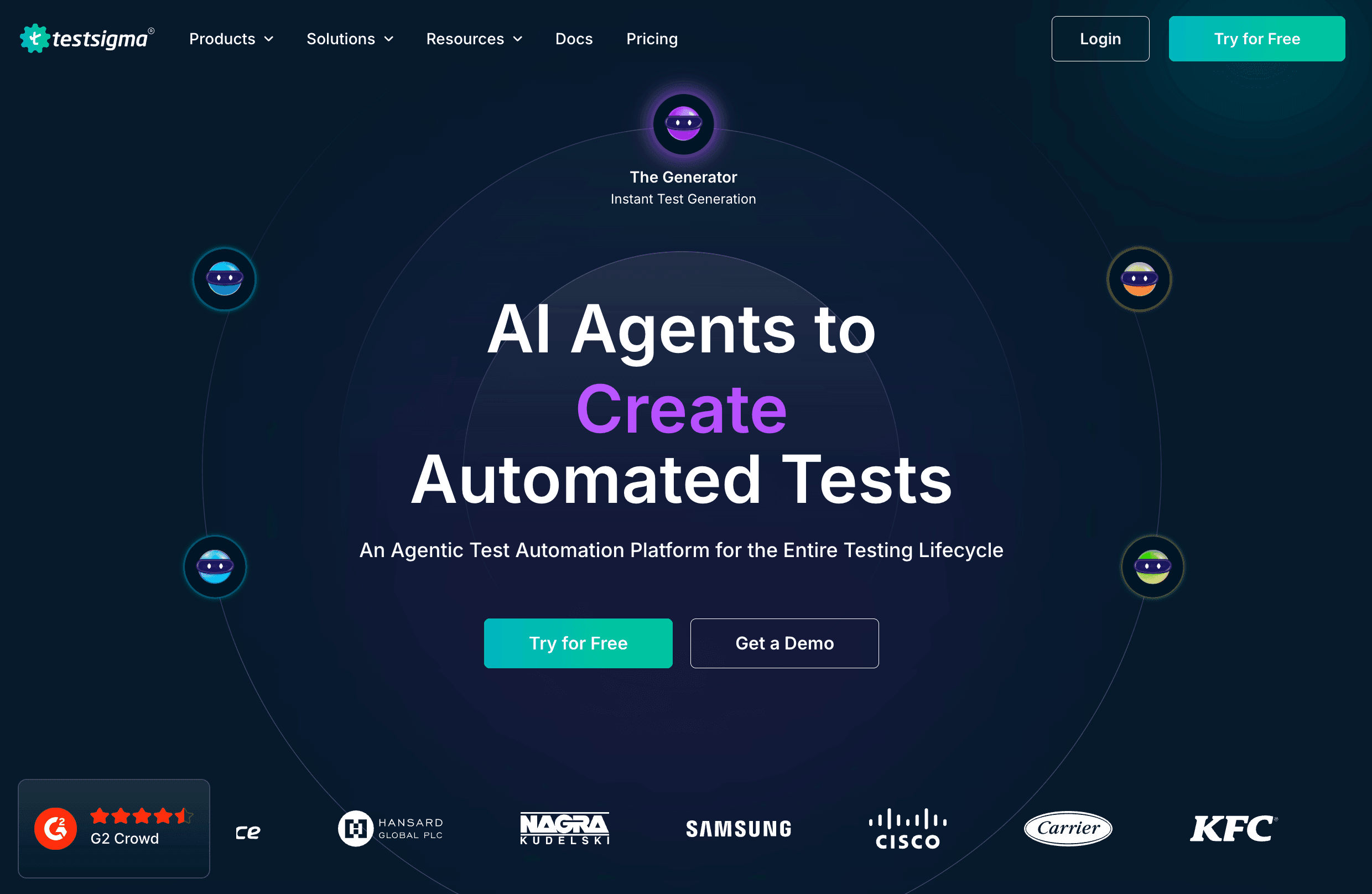
Overview: Testsigma is an open-source, no code/low code platform for web, mobile, and API testing. It’s community-driven and highly customizable.
Key Features: Natural language steps, open-source core, cloud/self-hosted, auto-healing, unified test management.
Pros: Cost-effective, unified testing, active community, easy scaling.
Cons: Some advanced tech not supported, learning curve for advanced features.
Best For: Startups, open-source adopters, budget-conscious teams.
TestGrid
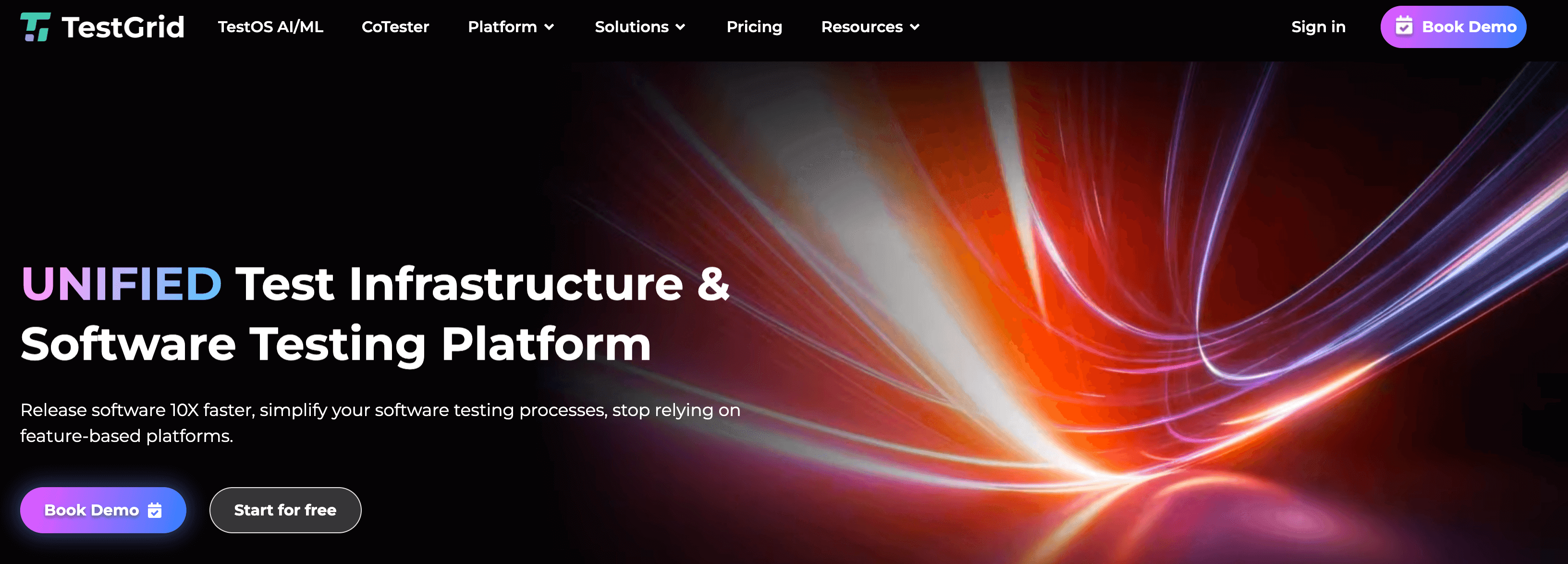
Overview: TestGrid is a unified platform offering no code automation, load testing, network testing, and even robotic arms for OTT device testing.
Key Features: Keyword-driven no-code tests, AI auto-heal, device/network/load testing, cloud/on-prem options.
Pros: Covers web/mobile/IoT, unique device testing, flexible deployment.
Cons: Coding needed for advanced flows, new platform, potential vendor lock-in.
Best For: Companies needing broad QA including device and network testing.
Kobiton
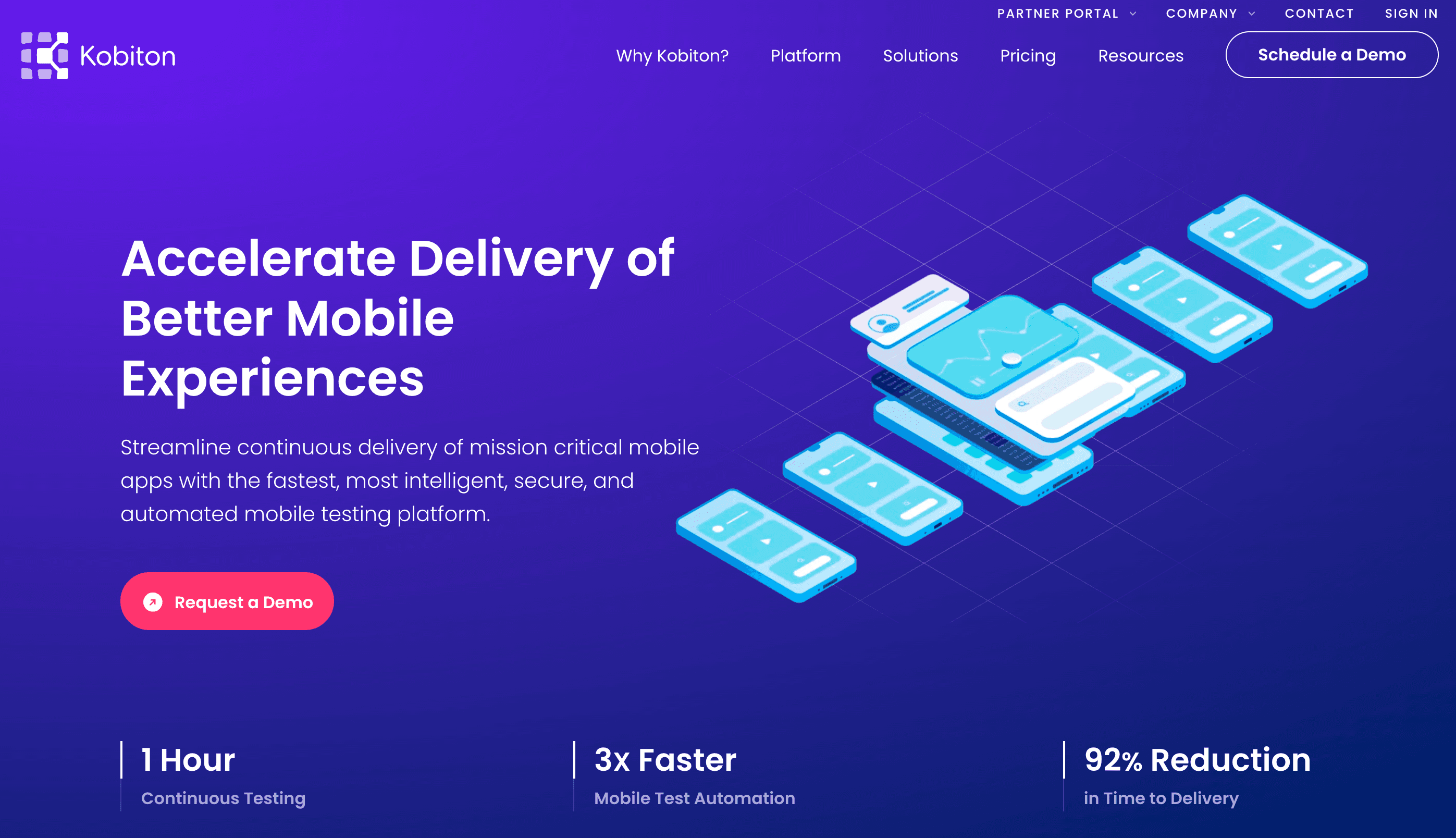
Overview: Kobiton is a mobile experience platform with scriptless automation. Record manual sessions on real devices and let AI generate test scripts.
Key Features: Real-device cloud, AI script generation, visual validation, performance metrics.
Pros: Mobile-centric, easy scriptless creation, exports to Appium.
Cons: Limited web support, complex logic needs code, learning curve for UI.
Best For: Mobile app teams wanting easy, real-device testing.
TestComplete
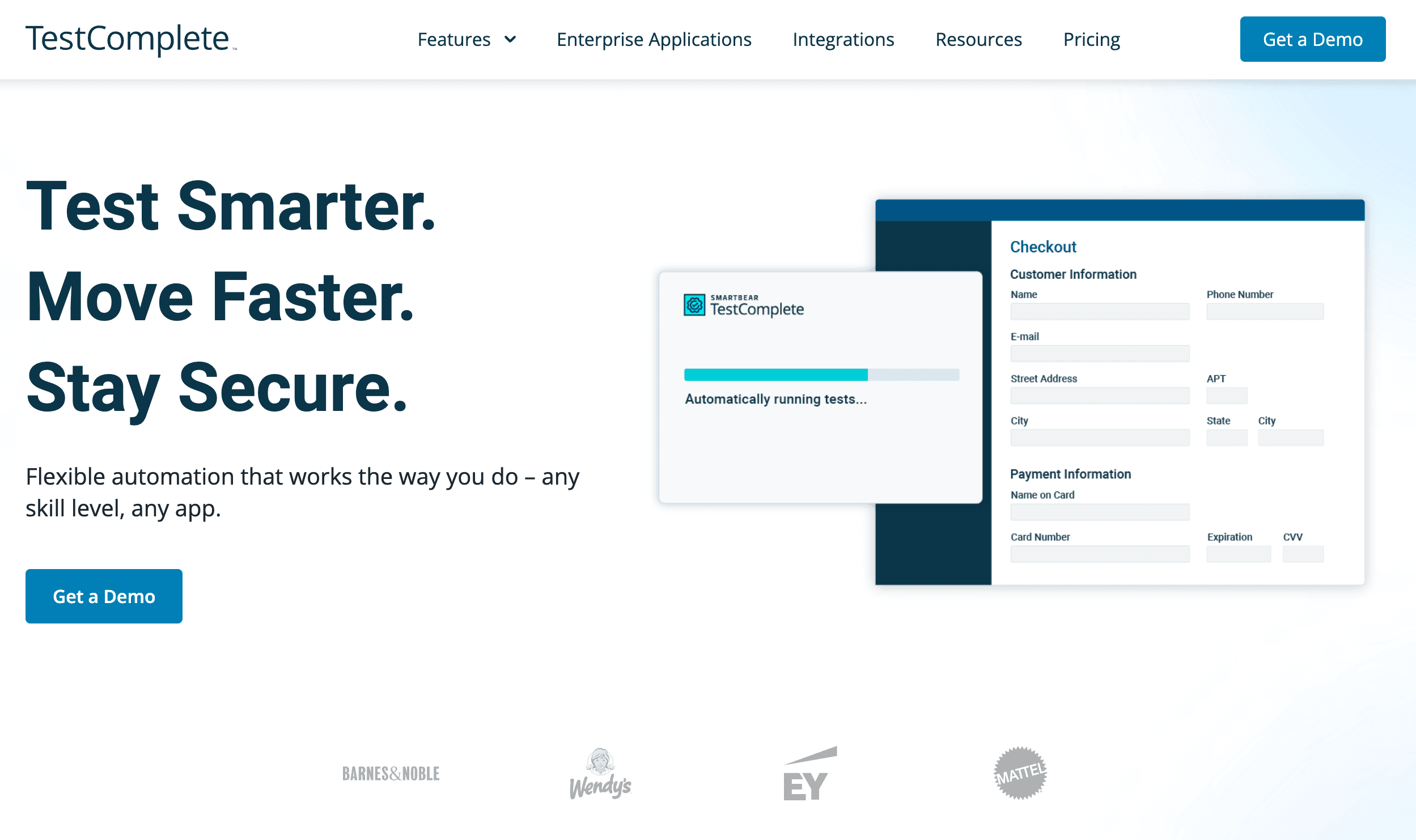
Overview: TestComplete is a mature platform for UI test automation across web, desktop, and mobile. It offers both keyword-driven and scripted options.
Key Features: Keyword-driven editor, multi-language scripting, object property recognition, data-driven testing.
Pros: Flexible, strong desktop support, large user base.
Cons: Aging interface, complexity for large projects, per-seat licensing.
Best For: Teams needing desktop/web automation and mixed skill sets.
Worksoft Certify
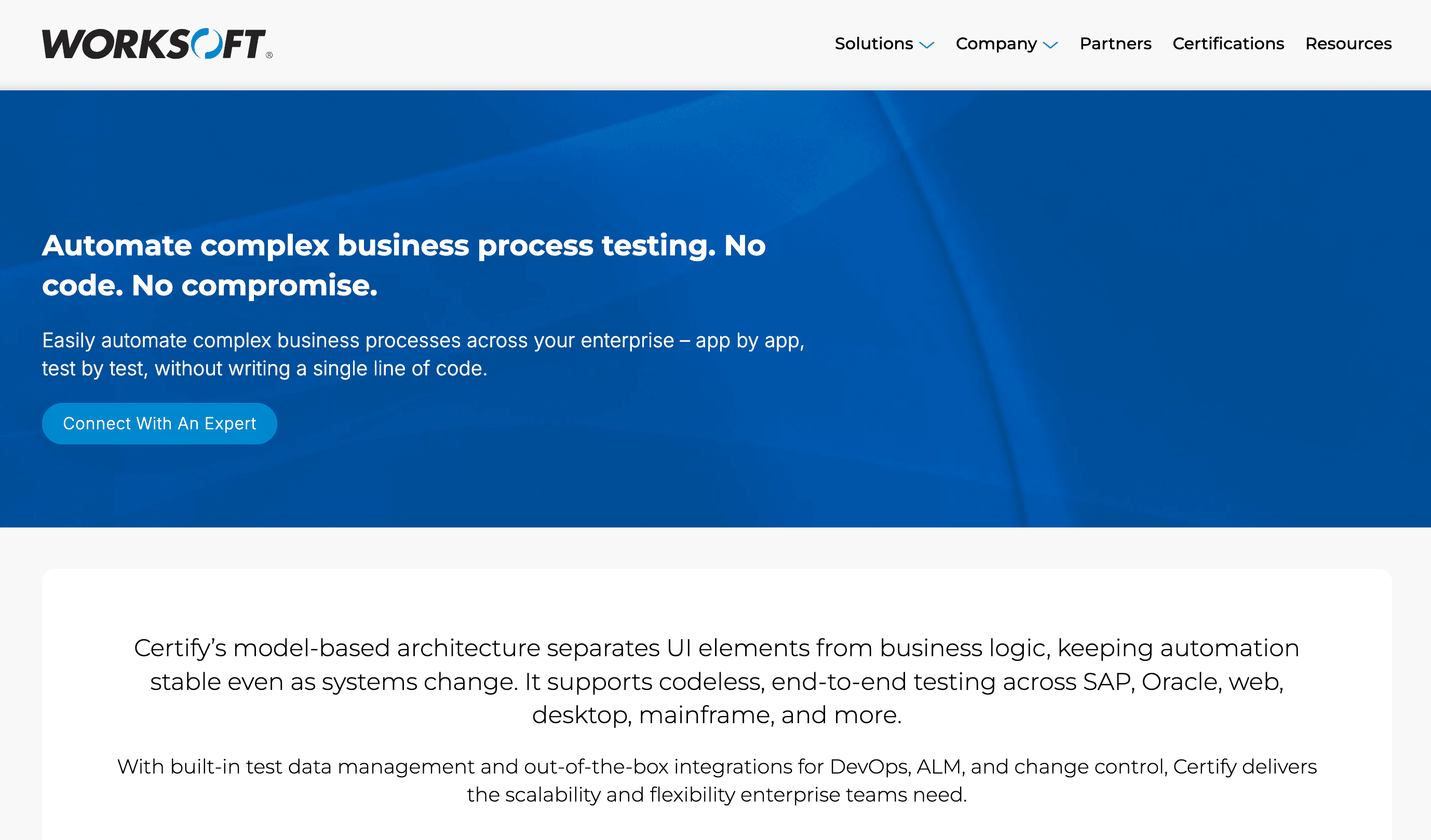
Overview: Worksoft is built for enterprise process automation, especially in SAP and multi-app environments. It captures business processes and automates them codelessly.
Key Features: Business process capture, SAP/ERP integration, process analytics, cross-app automation.
Pros: Excels at SAP/ERP, process insights, enables non-programmers.
Cons: High cost, specialized, fewer customization options.
Best For: Large enterprises with complex business processes.
Rainforest QA
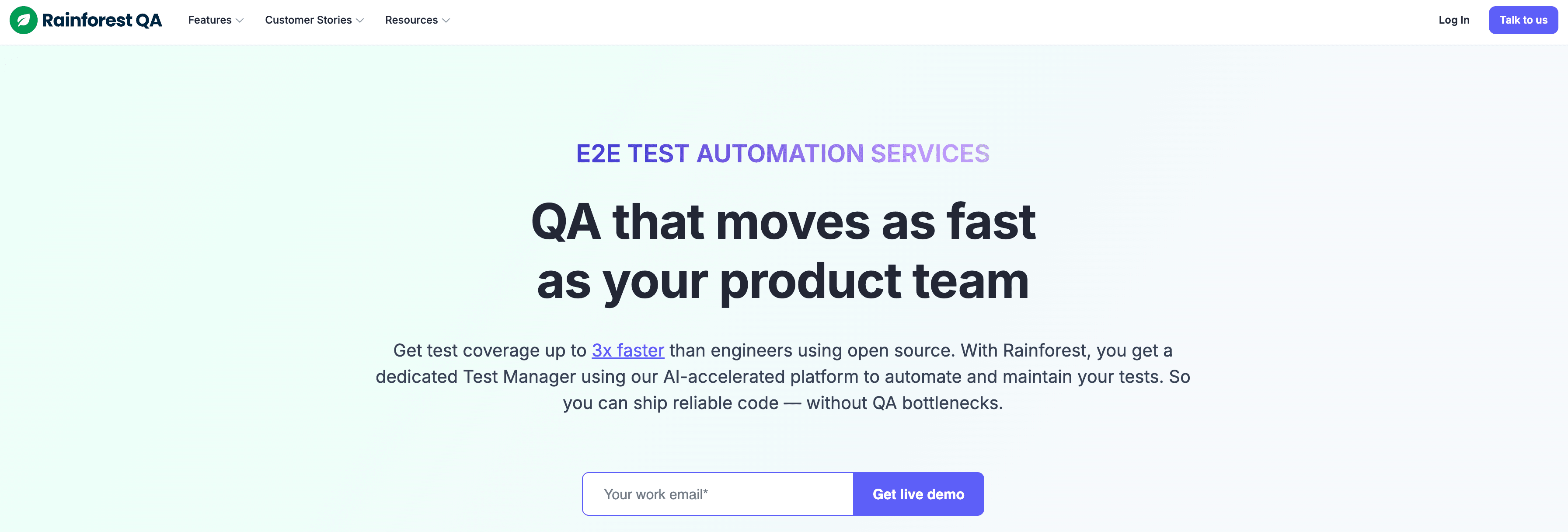
Overview: Rainforest QA is a cloud-based, truly no code platform where you write tests in plain English and run them visually on cloud VMs.
Key Features: Plain English test creation, visual testing, AI self-healing, massive parallel execution.
Pros: Fully no code, easy to use, minimal maintenance, fast execution.
Cons: UI focus, lacks deep API/unit testing, cloud-only.
Best For: Startups and agile teams needing quick, no-friction web UI testing.
Squish
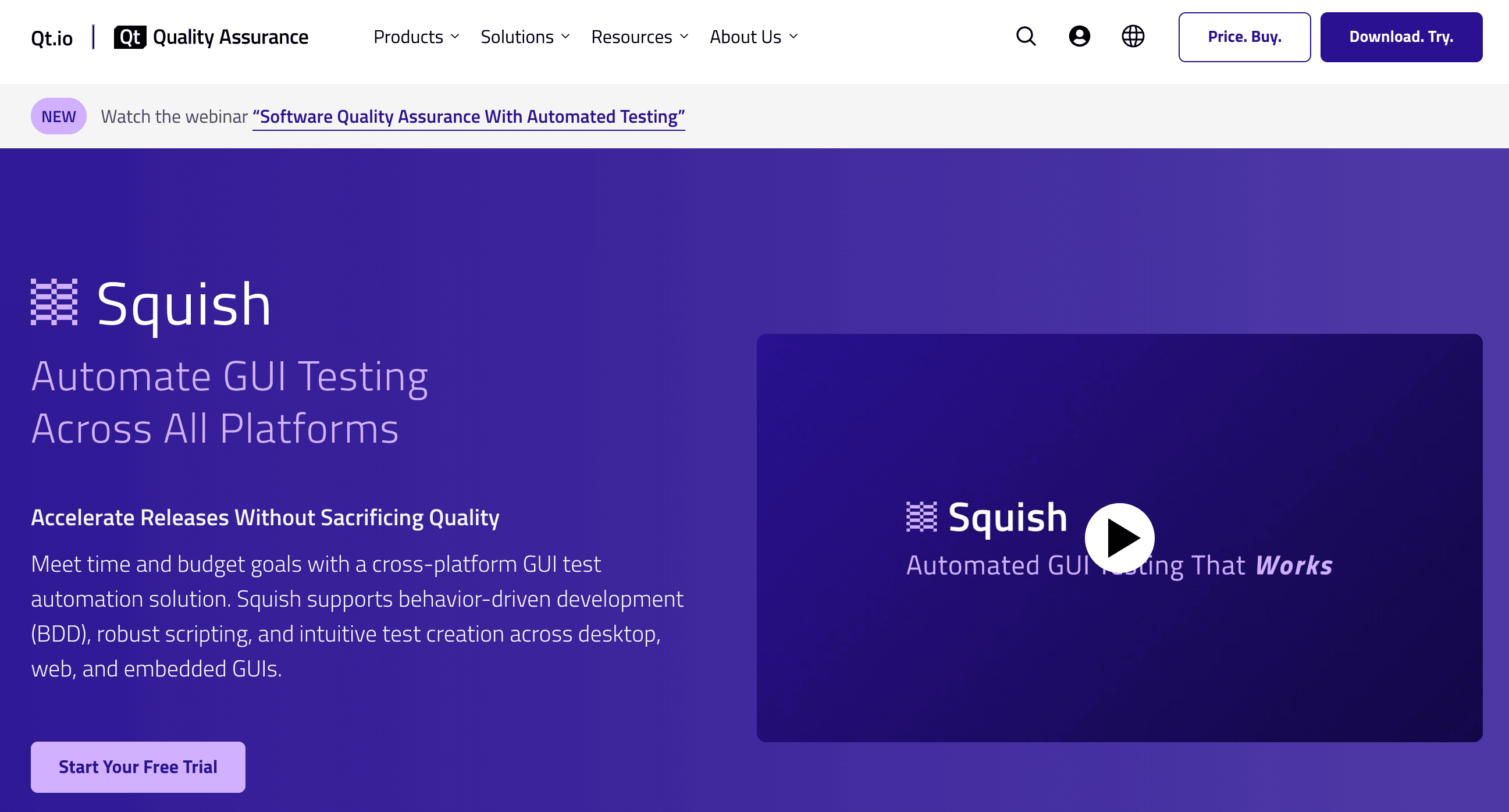
Overview: Squish is a cross-platform GUI automation tool supporting web, desktop, mobile, and embedded apps. It offers record/playback and scripting in multiple languages.
Key Features: Record/playback, BDD support, scripting, broad tech stack, CI integrations.
Pros: Highly versatile, strong object identification, robust support.
Cons: Not fully no code, high license cost, geared toward technical users.
Best For: Teams building cross-platform or embedded GUI apps.
Beyond Testing: Thunderbit as a No Code Automation Solution for Business Users
Now, let’s step outside the QA lab for a second. While all the tools above focus on test automation, no code automation is revolutionizing business workflows too. That’s where comes in.
Thunderbit is an AI-powered, no code automation tool for business users—think sales, marketing, ecommerce ops, and real estate agents. It’s not a test automation tool, but it’s built on the same philosophy: make automation accessible to everyone.
With Thunderbit, you can:
- Scrape data from any website, PDF, or image in just a couple of clicks.
- Automate form filling and web workflows (imagine posting a job to 10 sites at once).
- Export data directly to Excel, Google Sheets, Airtable, or Notion—no manual copy-paste.
- Schedule scrapes or automations to run automatically (great for price monitoring or lead generation).
- Extract emails, phone numbers, and images from any web page—all for free.
The magic is in the AI: Thunderbit reads the page, suggests what to scrape, and handles pagination or subpages automatically. It’s as easy as “click, scrape, done.” And because it’s a Chrome extension, it works right in your browser.
The key difference? Test automation tools validate software behavior. Thunderbit automates business tasks—scraping, data entry, and repetitive web actions. But both empower non-coders to automate what matters to them.
If you’re curious, you can or check out more .
Pros and Cons of No Code Test Automation Tools
Pros
- Accessible to Non-Programmers: Opens automation to manual testers, business analysts, and more.
- Faster Test Development: Up to 90% faster test creation.
- Reduced Maintenance: AI self-healing and smart locators mean less time fixing broken tests.
- Faster Feedback: Integrates with CI/CD for rapid validation.
- Cost Savings: Less need for specialized engineers, lower ongoing costs.
- Improved Collaboration: Tests are readable by everyone, not just coders.
- Scalable: Cloud-based tools handle parallel execution and broad coverage.
Cons
- Customization Limits: Edge cases or complex logic may require code or workarounds.
- Scalability for Large Projects: Managing thousands of visual tests can get unwieldy.
- Vendor Lock-In: Tests are often not portable between tools.
- Learning Curve: Still requires learning the tool’s logic and quirks.
- Integration Gaps: Some tools may not fit every CI/CD setup perfectly.
- Costs: Commercial tools can get pricey as you scale.
- Skill Atrophy: Over-reliance on no code can mean less technical depth on the team.
Tips for Overcoming Challenges
- Choose tools that allow code extensions for edge cases.
- Modularize and organize tests for scalability.
- Pilot with a small suite before scaling up.
- Invest in training and involve both technical and non-technical users.
- Monitor ROI and revisit tool choices as needs evolve.
When to Use No Code Test Automation Tools (and When Not To)
When to Use
- Regression and Repetitive Testing: Automate stable, repeatable flows.
- Agile/CI Environments: Keep up with fast releases and frequent UI changes.
- Cross-Browser/Device Checks: Quickly cover many environments.
- Teams with Limited Coding Skills: Empower manual testers and business users.
- Standard UI Flows: Apps with typical buttons, forms, and navigation.
- Early Automation: Write tests in plain English as living requirements.
When Not To
- Highly Complex or Custom Scenarios: Deep logic, custom UIs, or non-standard tech.
- Flaky or Unstable UIs: If the app changes daily, automation (of any kind) will struggle.
- Exploratory Testing: No code tools can’t replace human intuition.
- Unit or Low-Level Testing: Stick to code frameworks for backend logic.
- Heavy Custom Integrations: If you need deep hooks into your stack, code may be better.
- Security/Performance Testing: Use specialized tools for these needs.
- Strict Compliance Needs: Some industries require code-level audit trails.
Remember: Automate the predictable, manual test the unpredictable. No code tools just make the “predictable” part accessible to everyone.
Conclusion: Finding the Right No Code Test Automation Tool for Your Team
No code test automation isn’t just a trend—it’s a fundamental shift in how teams build and deliver quality software. The stats back it up: , and .
Here’s what I recommend:
- Assess your needs: What are your pain points—speed, maintenance, coverage?
- Shortlist and trial: Most tools offer free trials. Get hands-on and see what fits.
- Involve your team: Let both technical and non-technical folks try the tools.
- Start small, scale up: Automate a few high-value flows, then expand.
- Invest in training and best practices: Even no code tools need thoughtful test design.
And don’t forget—no code automation isn’t just for QA. Tools like Thunderbit are bringing the same accessibility to business workflows, letting anyone automate the boring stuff and focus on what matters.
If you’re ready to accelerate your testing (and maybe your business ops too), now’s the time to dive in. Try a few tools, experiment, and see how much more you can accomplish when automation is truly for everyone.
Happy testing—and happy automating!
FAQs
1. What is no code test automation and why is it gaining traction in 2025?
No code test automation allows users to build and run software tests using visual interfaces and plain English, with no coding required. In 2025, it’s gaining popularity because it bridges the skills gap, speeds up testing cycles, lowers costs, and enables broader team participation. It’s especially valuable as teams face increasing pressure to release faster with fewer bugs.
2. Who can benefit from no code test automation tools?
These tools are beneficial for QA engineers, manual testers, product managers, and business analysts—essentially anyone who understands the app but may not have coding skills. This democratization empowers more team members to contribute to quality assurance, leading to faster feedback and broader test coverage.
3. What are the main advantages and limitations of using no code test automation tools?
Advantages include rapid test creation (up to 90% faster), reduced maintenance, improved collaboration, and lower reliance on automation engineers. Limitations include reduced flexibility for complex logic, potential vendor lock-in, higher costs at scale, and limited support for highly customized or backend scenarios.
4. How do I choose the right no code test automation tool for my team?
Key criteria include ease of use, supported platforms (web, mobile, API, etc.), test creation and maintenance features (like AI self-healing), CI/CD integration, reporting capabilities, scalability, support/community strength, and transparent pricing. Always trial a few options before committing.
5. How does Thunderbit relate to no code automation, and what does it offer?
While not a test automation tool, Thunderbit is a no code automation platform for business users. It automates data scraping, form filling, and repetitive web tasks—without code. Like no code QA tools, Thunderbit empowers non-technical users to automate work, making business operations more efficient.
Learn More: